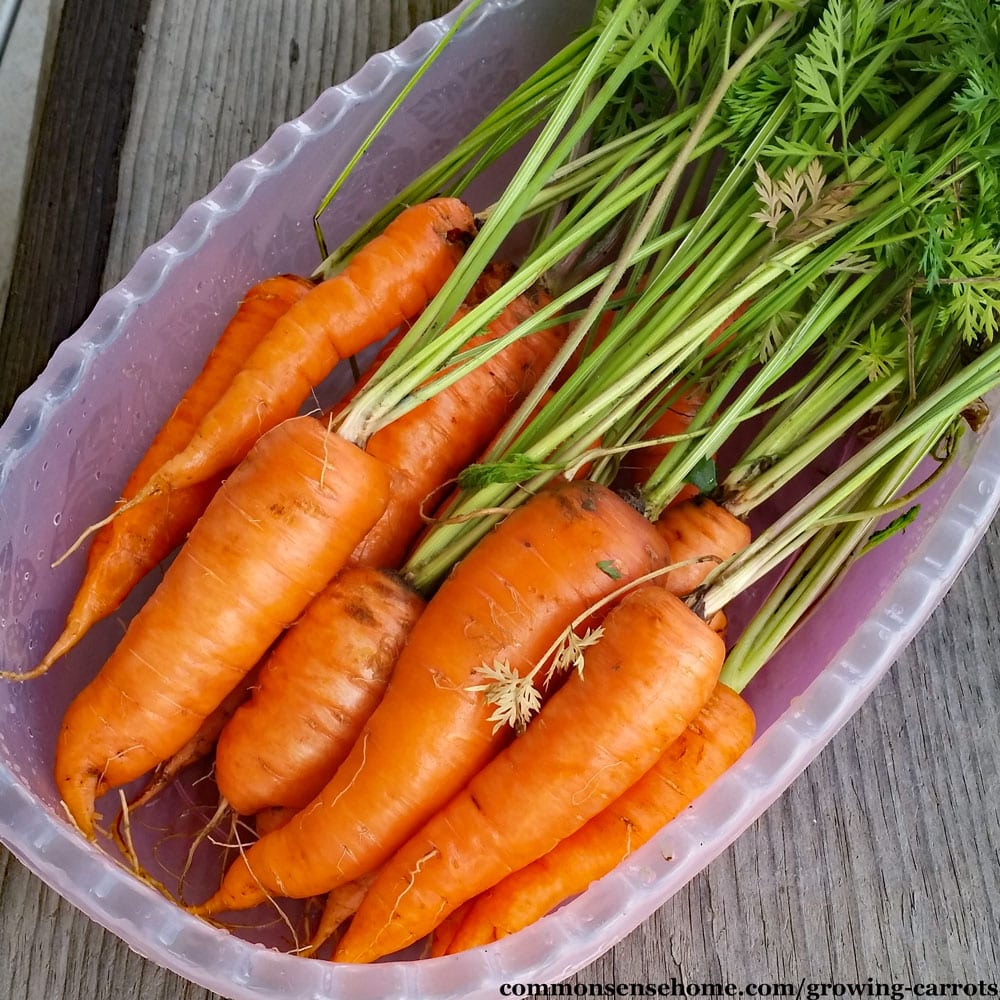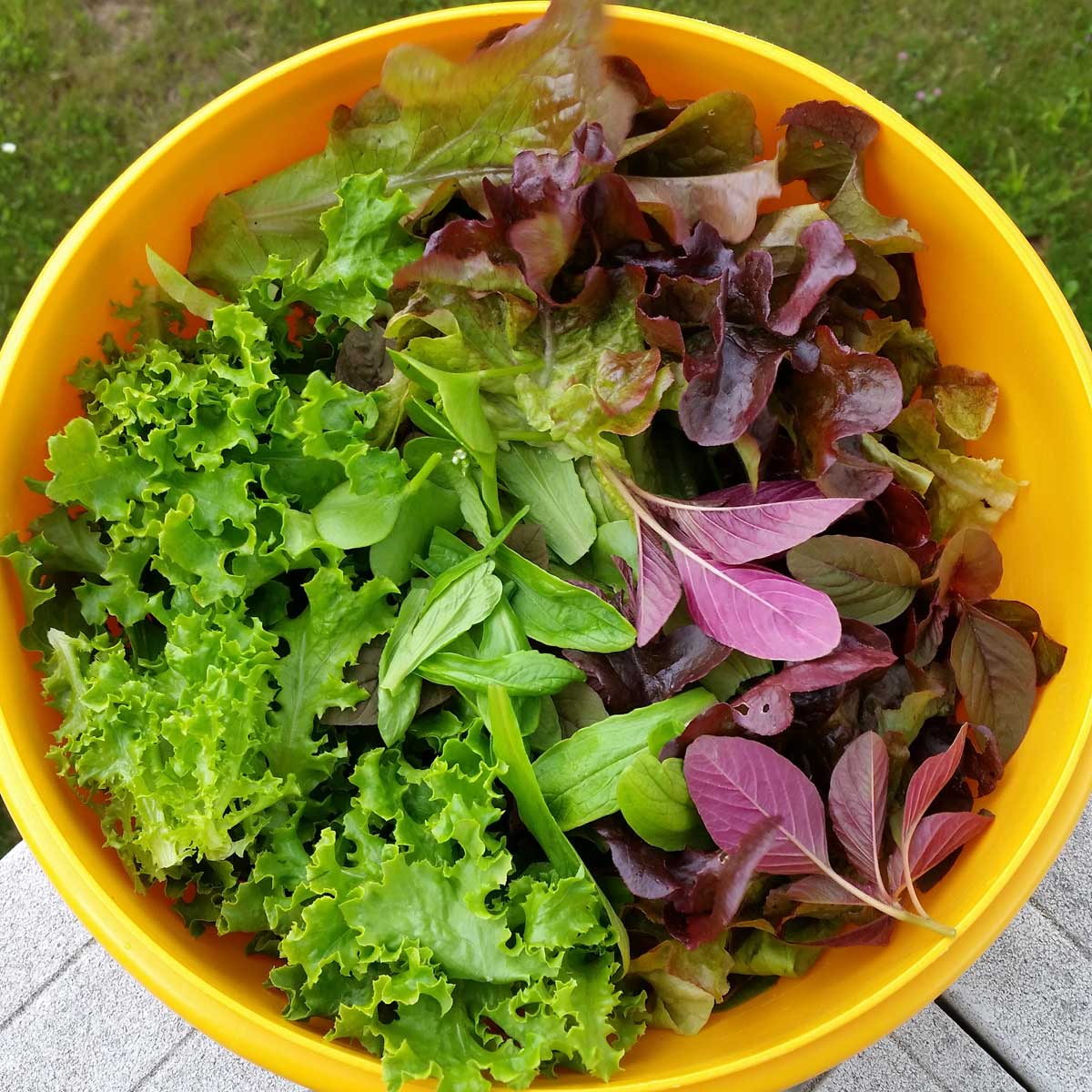Vegetables That Grow in Shade & Tips for Success
This post may contain affiliate links. Read my full disclosure here.
Shade is a challenge for many home gardeners, but there are many vegetables that grow in shade or partial sun. In some areas, shade is a must to protect plants from intense sun, or to extend the harvest season. Even here in northeast Wisconsin I use shading selectively in my garden.
This guide covers vegetables that grow well in shade, tips for boosting their yield, and common pitfalls to avoid. We also share how shade gardening impacts growth and yield, and how it works in different climates.
Table of contents
Best Vegetables to Grow in Shade
While most vegetables prefer full sun (6-8 hours of direct sunlight), some can thrive with partial shade (3-6 hours of sun) or even in dappled light. Here are some of the best shade-tolerant vegetables:
Leafy Greens
- Lettuce – Thrives in cool, shaded environments, preventing it from bolting too quickly.
- Spinach – Prefers light shade to avoid becoming bitter in hot conditions.
- Kale – A hardy green that grows well with less sunlight.
- Swiss Chard – Tolerates shade and continues producing throughout the season.
- Bok Choy – Like lettuce, this veggie bolts (sends up flowers) if the temperature swings. Keeping it in shade helps to keep it ready for harvest.
Most greens tolerate shade, this are just some of the most common for home gardeners.
Root Vegetables
- Carrots – Will grow in partial shade, though they may take longer to fully mature.
- Beets – Develops well in lower light, though root size may be slightly reduced.
- Radishes – One of the fastest-growing vegetables, even in limited sunlight.
- Turnips – Harvest both roots and greens for a dual-purpose crop.
When plants are small, you can harvest entire plants to give the rest more room to grow. (Thinning the row or patch.) Use these young, tender greens in salads.
When the plants mature, pick the entire plant, and use both roots and greens. Don’t attempt to pick the greens and expect the root to continue growing without many leaves. This does not work well.
Herbs and Other Shade-Friendly Crops
- Cilantro – Prefers cooler temperatures and partial shade extends its harvest.
- Parsley – Grows well in lower light conditions. Harvest large, outer leaves and let the center grow.
- Broccoli – Tolerates partial shade, though heads may be smaller.
- Peas – Enjoy cooler temperatures and can thrive in partial shade.
Tips for Maximizing Production in Shade
Vegetables that grow in shade may need a little different care than those grown in full sun.
1. Optimize Soil Quality
Since plants in shade receive less energy from the sun, they rely more on soil nutrients. Improve soil by adding compost, organic matter, and well-balanced fertilizers to promote healthy growth.
2. Use Reflective Surfaces
Brighten up shady spots by using reflective mulch or surfaces to bounce sunlight onto plants. One easy way to do this is by planting near a light colored wall or fence.
3. Choose Lighter-Colored Pots
If gardening in containers, opt for white or light-colored pots to help reflect sunlight onto your plants. Every bit of extra light makes a difference.
4. Practice Succession Planting
Stagger planting times to ensure continuous harvests. Sow fast-growing crops like radishes every few weeks for a steady supply.
5. Keep Plants Well-Spaced
Crowding plants in the shade can reduce airflow and increase disease risk. Allow sufficient spacing to maximize light penetration and air circulation. This is extra important if your growing space is protected by buildings or thick trees that block the wind.
6. Water Wisely
Shady areas retain moisture longer, so avoid overwatering to prevent fungal diseases and root rot. When in doubt, stick your finger into the soil or dig a bit to check moisture under the surface.
Would you like to save this?
7. Prune Overhead Foliage
If trees or shrubs create too much shade, selectively prune branches to let more light filter through.
Common Mistakes to Avoid
1. Choosing the Wrong Plants
Avoid planting sun-loving vegetables like tomatoes, peppers, or squash in the shade, as they will struggle to produce fruit. Fruiting plants need sunlight to power fruit growth.
2. Neglecting Soil Preparation
Poor soil quality in shade can stunt growth. Always enrich soil with compost and organic matter to compensate for lower light levels.
3. Overwatering
Since shaded soil retains moisture longer, excessive watering can lead to fungal issues. Check soil moisture before watering.
4. Ignoring Pests
Shaded gardens can attract more pests like slugs and aphids. Regularly inspect plants and use organic pest control methods. See “Natural Pest Control” and “Ducks for Pest Control” for more tips.

5. Expecting Large Harvests
While shade-friendly vegetables will grow, they may have smaller yields compared to those grown in full sun. Manage expectations and grow a variety of crops to ensure a steady harvest.
Consider adding extra growing space in a community garden, or teaming up with a friend who has a sunny yard, to boost your harvest.
Understanding Shade and Its Impact on Growth
Shade varies in intensity and duration. Understanding these differences can help you choose the right plants and growing strategies:
- Full Shade – Areas that receive little to no direct sunlight. Very few vegetables thrive in full shade, but leafy greens like lettuce and spinach can tolerate these conditions.
- Partial Shade – Receives 3-6 hours of direct sunlight, often in the morning or evening. Many leafy greens, root vegetables, and herbs can grow well in partial shade.
- Dappled Shade – Sunlight filters through trees or other obstacles, providing intermittent light throughout the day. This type of shade is ideal for crops that prefer cooler conditions.
- Afternoon Shade – Areas that receive morning sun but are shaded in the hotter afternoon hours. This condition is ideal for preventing heat-sensitive crops like lettuce and spinach from bolting too soon.
Shade and the Growing Season
Shade impacts the length and timing of the growing season in several ways:
- Cooler Temperatures – Shaded gardens stay cooler. This allows crops like lettuce, spinach, and cilantro to grow longer into warm seasons before bolting.
- Slower Growth Rates – Since plants receive less sunlight, their growth can be slower than in full sun. This may require earlier planting to compensate for the longer maturation period.
- Extended Harvests – Shade can help prolong the harvest of cool-season crops into summer and delay fall plantings from bolting too soon.
Climate and Shade Gardening
Growing vegetables in shade in my garden is not the same as dealing with shade in other areas of the country.
- Wisconsin (Cool Climate, Short Growing Season) – In late spring and summer, shade helps prevent cool-season crops like lettuce and spinach from bolting early. However, since the growing season is shorter, you want to maximize sunlight exposure in early spring and fall.
- Texas (Hot Climate, Long Growing Season) – Afternoon shade is a major advantage in Texas. It protects plants from excessive heat stress and extends the life of heat-sensitive crops. Shade also reduces water evaporation, which is critical in hot, dry conditions.
- Colorado (Variable Climate, High Elevation) – Partial shade mitigates the intense sun at high elevations, particularly in midsummer. However, too much shade can slow growth due to cooler temperatures and shorter growing seasons.
- Louisiana (Hot and Humid Climate, Year-Round Growing) – The intense heat and humidity can cause plants to wilt or bolt rapidly. Many vegetables benefit from morning sun with afternoon shade to thrive in the humid environment.
My friend, Angi, from Texas, shares tips for beating the heat in the article “Summer Gardens“. My friend, Paula, from Louisiana, shares her year round growing strategy here.
By choosing the right vegetables, optimizing growing conditions, and avoiding common mistakes, you can create a productive shade garden.

This article is written by Laurie Neverman. Laurie and her family have 35 acres in northeast Wisconsin where they grow dozens of varieties of fruiting trees, shrubs, brambles, and vines, along with an extensive annual garden. Along with her passion for growing nutrient dense food, she also enjoys ancient history, adorable ducks, and lifelong learning.




